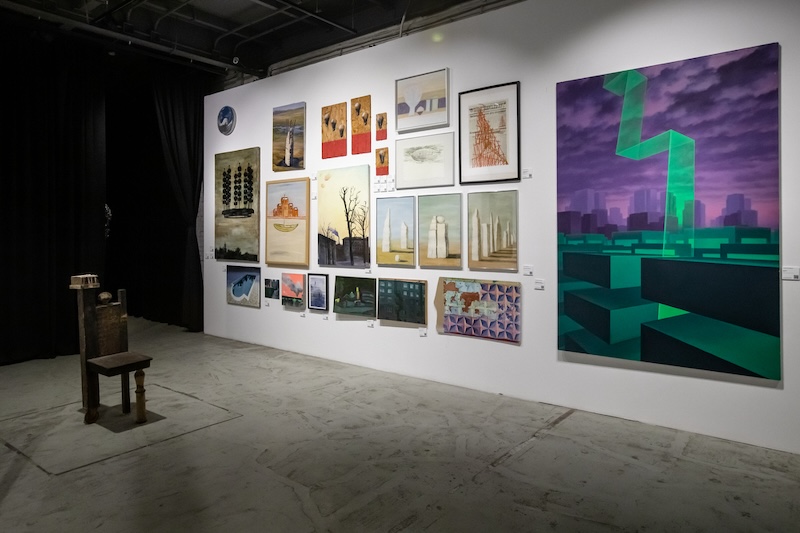
Text: Marina Alvitr
The curator of the exhibition was a social network artocratia.com, that’s why there was no curatorial text for a long time. Nevertheless, in the end I decided to take responsibility on myself and to become the voice of the social media to tell you more about the concept of the exhibition.
The funny and ironic thing about the "The architecture of Uncertainty" is that it kind of predicted the future, and back in October last year tried to visually and constructively convey the instability of the existing world. "Crises in various areas," we said, "lead to the fact that it’s impossible to solve all problems at the same time. A solution in one area leads to new questions and problems in another." And so it is, and today the relationship between everything and everyone on our planet has become obvious. This incredibly complex structure, or better to say structures, like a neural network are intertwined with each other. They’re in constant motion. A gap in one place leads to restructuring in completely unexpected and remote areas. These structures and their connections are alive, and therefore indefinite. It's not safe, but it's very interesting here.
During 6 months I’ve been trying to apply a similar principle of intertwining structures and ideas to the exhibition. It changed, rebuilt, expanded and gained new artistic images and ideas, which had to be located within the framework of three themes: "Human", "Space", "Structures". These themes, which is easy to notice in the "Labyrinth" section, easily flow from one to another, moving from the ultimate figurativeness - "human" to abstract "structures". The boundaries gradually blurred, one passed into another, sometimes invaded, sometimes even seemed alien. A human is not separable from space and from the structures in which he lives, just as they are formed by him.

During 6 months the exhibition lived: the artworks moved from one place to another, the design of the first floor even allowed changing the configuration of the space for hanging new artworks. The uncertainty principle was taken by me as a principle for curating. When we started the exhibition, I had no idea what collections would come to us, what new people we’d get to know, and even more - what would art be like at the end? Some collectors wanted to pick up the artworks back earlier, so other artworks had to take their place, some artworks didn’t arrive for a long time, and some couldn’t be involved no matter what. While the exhibition was alive, it became obvious that changes in one part follow changes in others, but I couldn’t and didn’t want to rebuild the entire exposition completely: for myself I identified "significant nodes" that almost didn’t change throughout the exhibition.

The curatorial principle of the "The architecture of Uncertainty" is laid down by the idea of Kevlin Henney, which was designed to build software, and this is what they have in common with the portal artocratia.com, since the principle must correspond to the curator. Kevlin Henney talks about a new idea of building an architecture, when at the initial stage, without knowing the user's behavior, we don’t lay out the entire architecture very precisely, but build "significant nodes" that form the final architecture of the entire product only together with users. The exhibition "The architecture of Uncertain" lived, depended, developed together with the users of the Artocratia. That is why the portal, and not one person, was its curator. This exhibition was made by Artocratia users who discussed the topic, uploaded artworks and shared their impressions on art. This is the exhibition made by a community based on only one principle: the love towards art. I’m glad that the result of this process has become a very weighty and voluminous catalogue.
During the exhibition the Artocratia itself stopped being just an online-museum, but became a social network. And, moreover, right now it tends to be a platform where artists themselves can present their own artworks. It’s important that our community grows, shares ideas with each other and continues to broadcast the idea of everything being linked to everyone, and everyone being linked to everyone.
